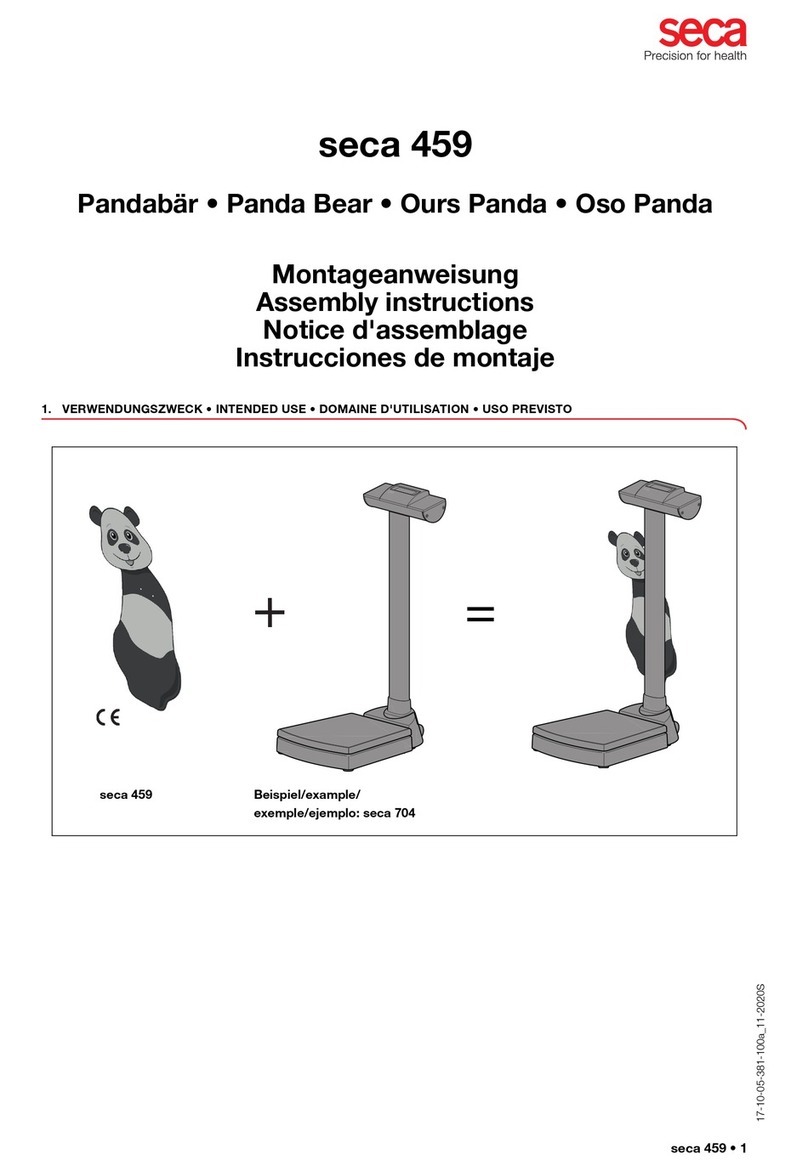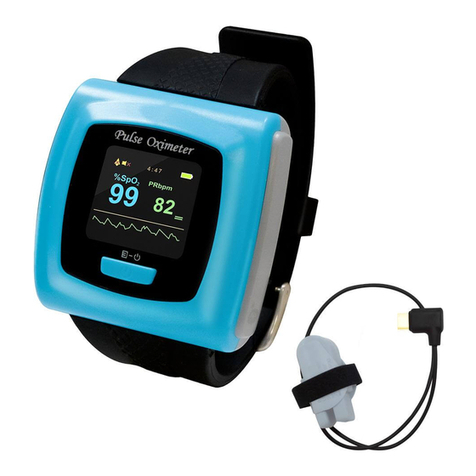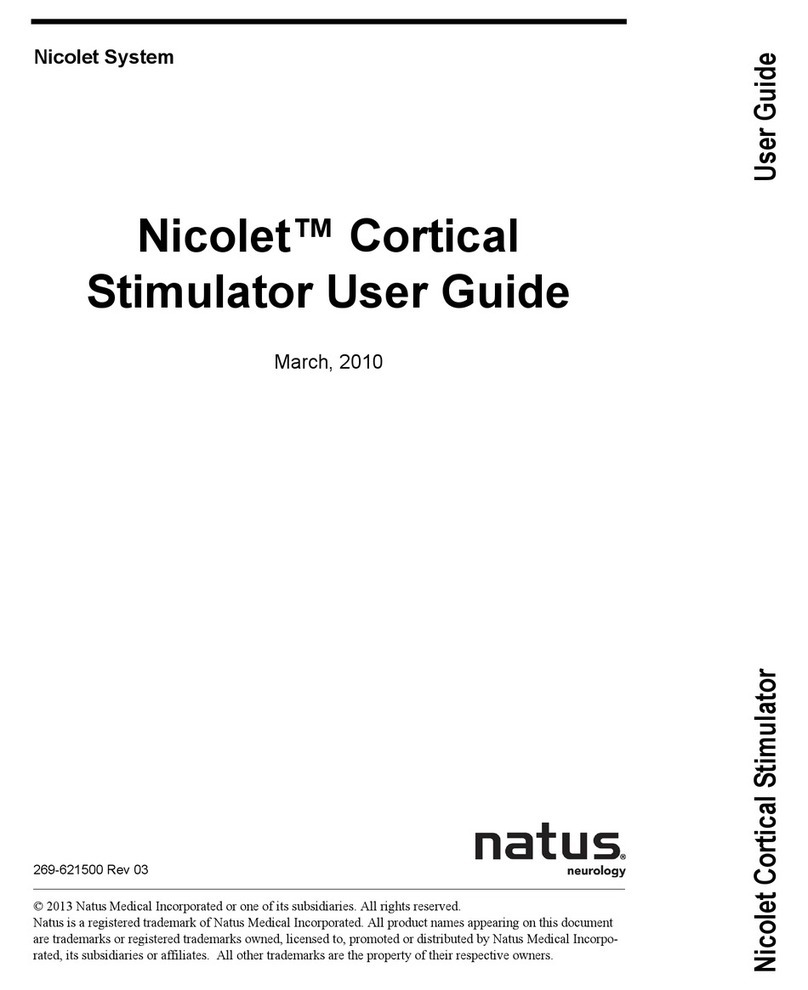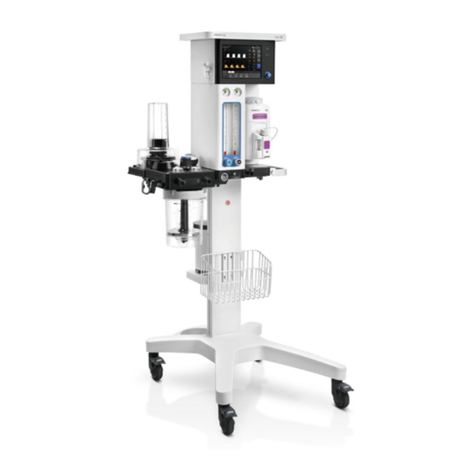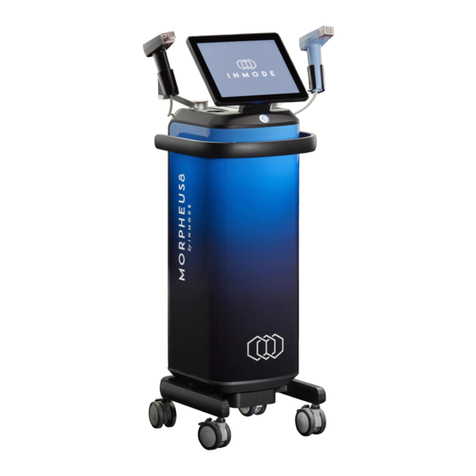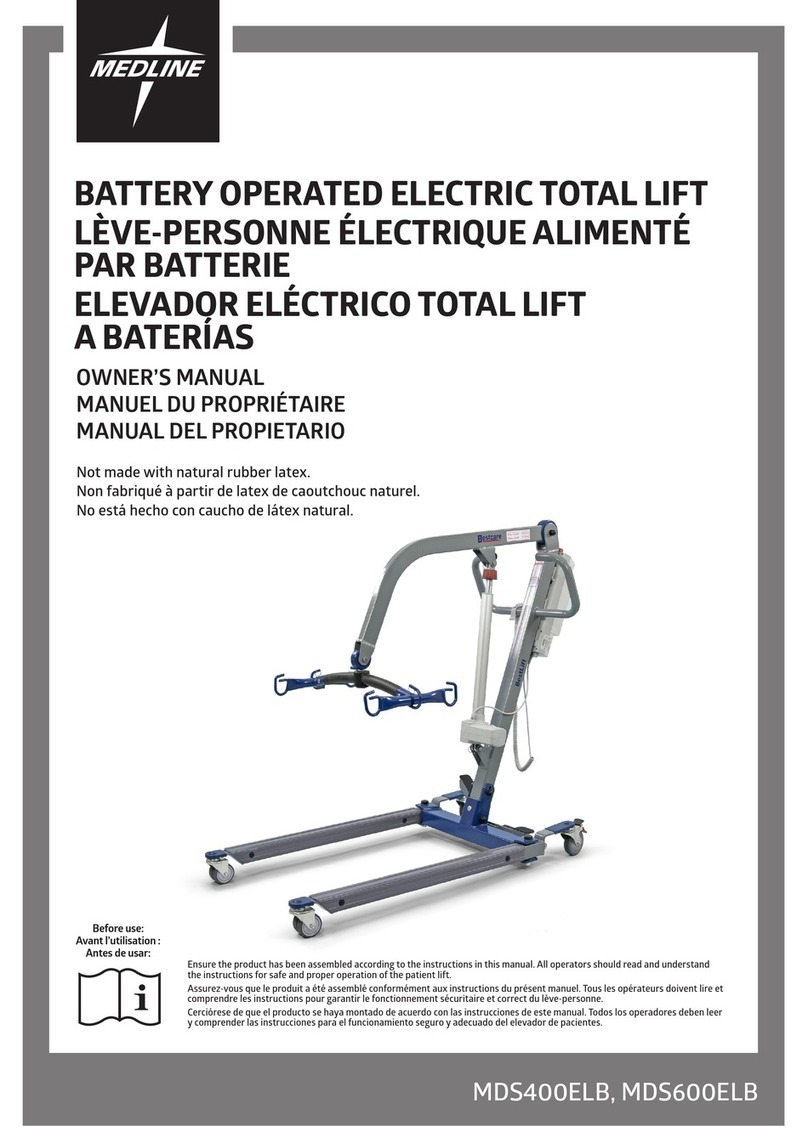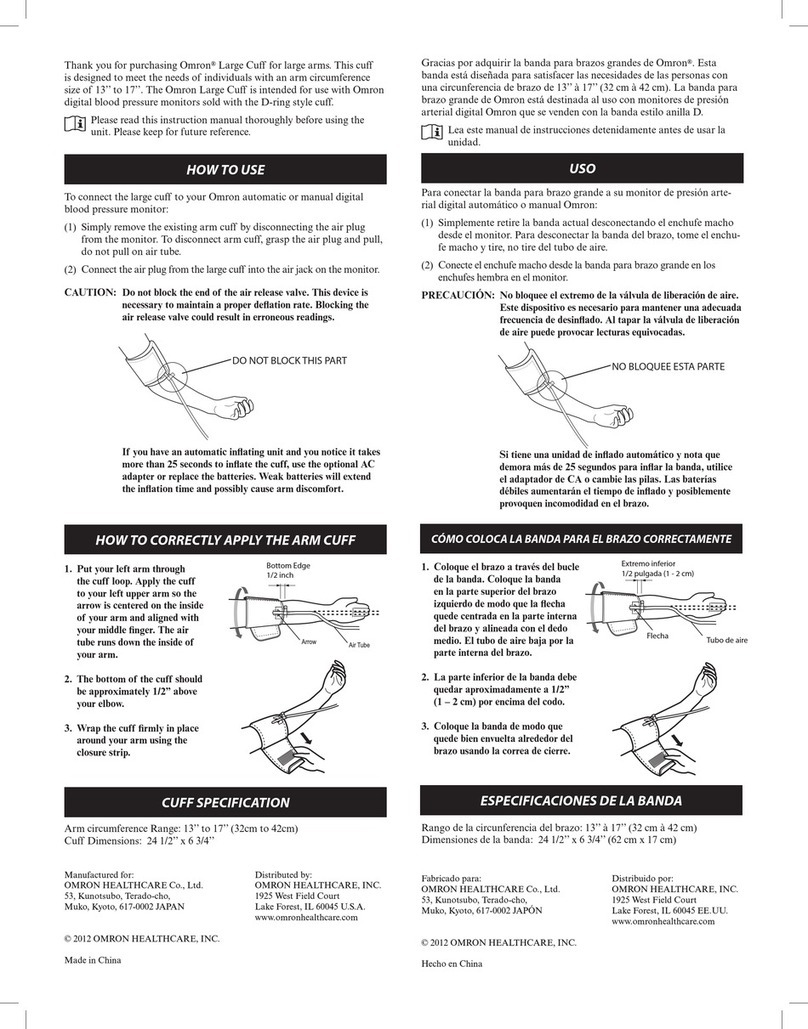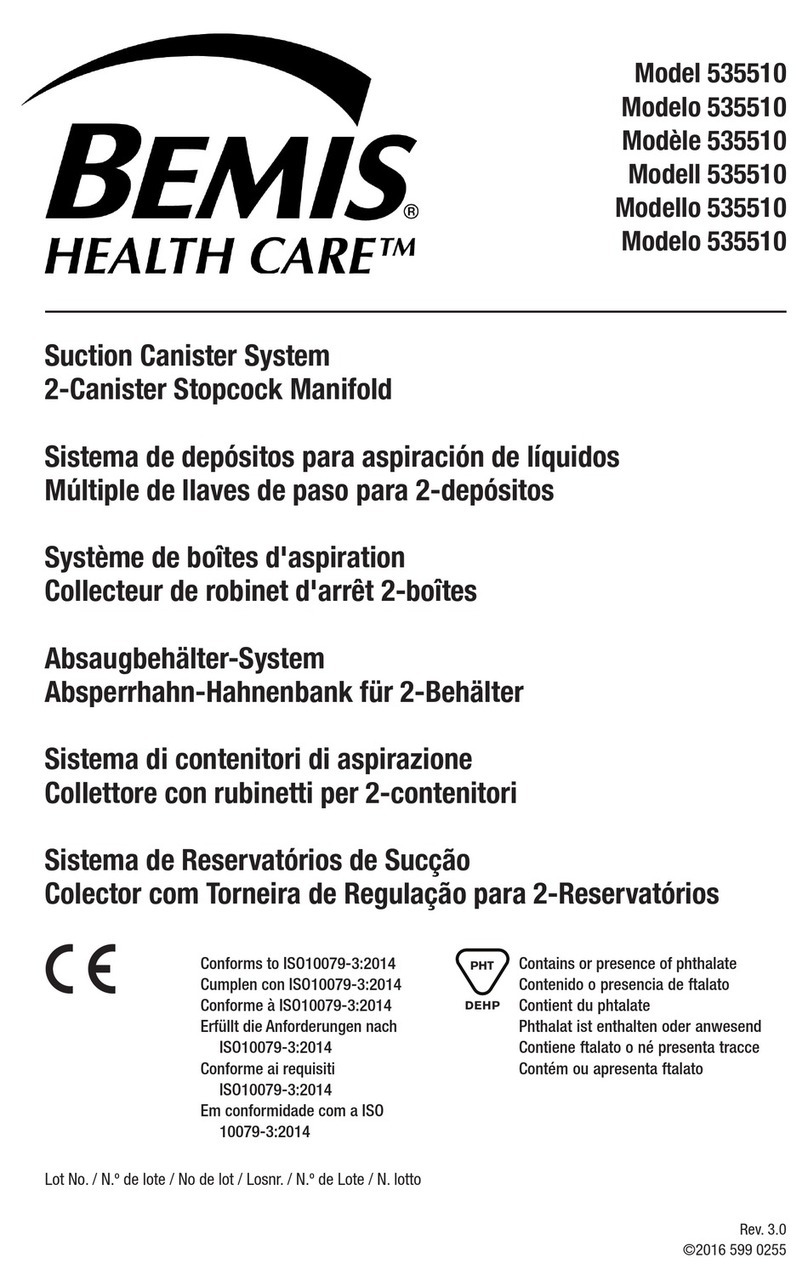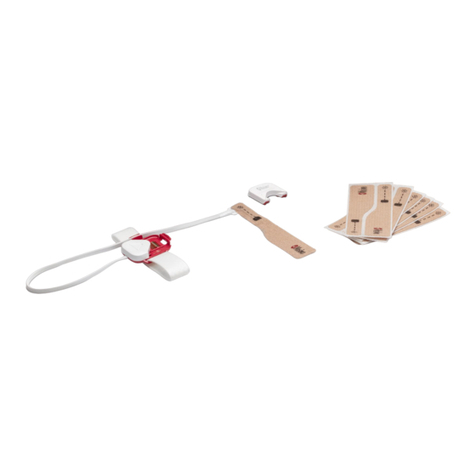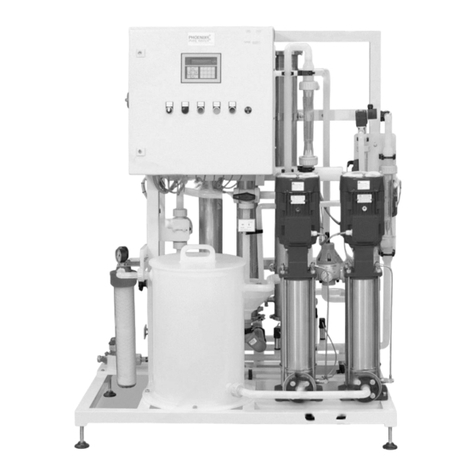tBPC oCare Pro100 User manual

Wrist-worn Pulse Oximeter
oCareTM Pro 100
Instructions for Use
Ver. P01A01-4

Taiwan Biophotonic Corporation
3
CAUTION: The federal laws of USA and the
laws of some countries restrict this device to sale
by or on the order of a
licensed practitioner.
Trademarks
References to “tBPC” in this manual imply Taiwan
Biophotonic Corporation.
References to “this device(s)” or “this product(s)” in this
manual imply tBPC’s oCareTM Wrist-worn Pulse Oximeter,
Model Pro 100.
© 2014 Taiwan Biophotonic Corporation. All rights reserved.
tBPC, oCareTM, oCareTM Sensor, and oCareTM Pro are registered
trademarks or
trademarks of Taiwan Biophotonic Corporation.
BLUETOOTH® word marks and logos are registered
trademark of Bluetooth SIG, Inc. Other trademarks and trade
names are those of their respective owners.
tBPC reserves the right to make changes and improvements to
this manual and this product it describes at any time, without
notice or obligation.

oCareTM Pro 100
4
Safety Symbols
Warnings and cautions noted in this manual and the
oCareTM Wrist-worn Pulse Oximeter, Model Pro 100, are
indicated by the following marks, designed to prevent
accidents caused by erroneous handling of this device.
Table 1: Labeling Symbols
Symbol
Description
Indicate text consists of warnings or cautions
relate to safety. Please read the text carefully
and use this device safely.
Indicate instructions related to actions. Please
follow instructions for use.
IP65
No ingress of dust; complete protection
against contact (dust tight)
Water projected by a nozzle (6.3 mm) against
enclosure from any direction shall have no
harmful effects
Indicate a Type BF-Applied Part device that
provides a particular degree of protection
against electrical shock.
Indicate separate collection for electrical and
electronic equipment (WEEE).
BLUETOOTH®figure mark.

Taiwan Biophotonic Corporation
5
Non-ionizing electromagnetic radiation.
Equipment includes RF transmitters.
Interference may occur in the vicinity of
equipment marked with this symbol.
Mark Conformity to European Medical
Device Directive 93/42/EEC
Indicate authorized representative in the
European Community.
Serial number
The container can and should be recycled
Temperature limitation
Humidity limitation
This way upright
Fragile, handle with care
Keep dry
Manufacturer
Date of Manufacture

oCareTM Pro 100
6
Safety Precautions
Warnings
1. This device is intended only as an adjunct device in user’s
health assessment and is not intended for use in the
diagnosis, cure, treatment, or prevention of disease or
other medical conditions. It must be used in conjunction
with other methods of assessing clinical signs and
symptoms.
2. Check the measuring site every 24 hours to determine skin
sensitivity of the user. User sensitivity varies depending
on medical status or skin condition.
3. Do not use the device for measurement while the watch
case is taken off from the watchband for charging purpose.
4. Avoid excessive pressure to the measuring site as this may
cause damage to the skin beneath the sensor.
5. No modifications to this device are allowed as it may
affect device performance.
6. If allergic to watchband material (thermoplastic silicone
vulcanizate) or oCareTM Pro 100 watch case material
(polycarbonate), please do not use this device.
7. The Time and Date function are not the primary function
of the application. Please do not make any medical

Taiwan Biophotonic Corporation
7
decision based on the Time or Date derived from the
device.
8. Tattoos or hairy hairs in the wrist would hinder the
measurement accuracy.
9. If this device is damaged in any way, discontinue use
immediately.
10. This device should not be used adjacent to or stacked with
other equipment. If adjacent or stacked use is necessary,
the device should be observed carefully to verify normal
operation.
11. When in fever (body temperature exceeds 40°C), please
stop using the device and seek medical attention
immediately.
12. Do not use the oCareTM Pro 100 and perform PR/SpO2
measurement within 48 hours after receiving the
photodynamic therapy to avoid the potential skin burn.
13. The use of cable and adaptor other than those listed in this
manual may result in increased electromagnetic emission
and/or decreased immunity of this device. Make sure the
adaptor used complies with IEC 60601-1 Edition 3.1.
14. This equipment complies with International IEC
60601-1-2:2014 for electromagnetic compatibility for
medical electrical equipment and/or systems. This
standard is designed to provide reasonable protection

oCareTM Pro 100
8
against harmful interference in a typical medical
installation. However, because of the proliferation of
radio-frequency transmitting equipment and other sources
of electrical noise in healthcare and other environments, it
is possible that high levels of such interference due to
close proximity or strength of a source might disrupt the
performance of this device. Medical electrical equipment
needs special precautions regarding EMC, and all
equipment must be installed and put into service
according to the EMC information specified in this
manual.
15. During measurement, do not take off the device and apply
the sensor port (the bottom of the watch case) to the eye to
avoid the potential eye damage.
16. Do not use this device in a Magnetic Resonance (MR)
environment.
17. This device is not defibrillation proof per IEC 60601-1.
18. Do not use the pulse oximeter in the presence of
flammable anesthetics or other flammable substance in
combination with air, oxygen-enriched environments, or
nitrous oxide.
Cautions
1. If this device fails to respond as described, refer to

Taiwan Biophotonic Corporation
9
“Troubleshooting” section for instruction.
2. Radios and cell phones or similar devices might affect the
equipment and should be kept at least 2 meters (6.5 feet)
away from equipment.
3. If the oCareTM Pro 100 is being used with wireless
communication, use the device within its designated range
of approximately 10 meters (spherical radius). Moving
outside this range may cause missing or lost data.
4. Refer to the “Care and Maintenance” section for cleaning
instructions.
5. Use a detergent that is safe for skin and washable
surfaces. Most detergents can be high sudsing, so use
sparingly. Wipe with a damp, detergent free cloth to
remove residue.
6. A functional tester cannot be used to assess the accuracy
of the oximeter.
7. Do not submerge the device in the water.
8. Follow local, state, and national governing ordinances and
recycling instructions regarding disposal or recycling of
the device and device components, including batteries.
9. In compliance with the European Directive on Waste
Electrical and Electronic Equipment (WEEE)
2002/96/EC, do not dispose of this product as unsorted
municipal waste. This device contains WEEE materials;
please contact your local distributor regarding take-back
or recycling of the device.

oCareTM Pro 100
10
10. This device is designed to determine the percentage of
arterial oxygen saturation of functional hemoglobin.
Factors that may degrade pulse oximeter performance or
affect the accuracy of the measurement include the
following:
excessive ambient light
excessive motion
electrosurgical interference
blood flow restrictors (arterial catheters, blood
pressure cuffs, infusion lines, etc.)
anemia or low hemoglobin concentrations
improperly applied this device
poor pulse quality
cardiogreen and other intravascular dyes
carboxyhemoglobin
methemoglobin
dysfunctional hemoglobin
venous pulsations
11. Do not perform any testing or maintenance on this device
while it is being used to monitor a user.
12. This device is a precision electronic instrument and must
be repaired by qualified technical professionals. Field
repair of this device is not possible. Do not attempt to
open the case or repair the electronics. Opening the case

Taiwan Biophotonic Corporation
11
would damage the device and void the warranty.
13. Portable and mobile RF communications equipment can
affect medical electrical equipment.
14. Do not fasten the device too tightly around the patient’s
wrist. Inaccurate readings and patient discomfort could
result.
15. To avoid the risk of confusing or misinterpreting patient
data when transmitting data via BLUETOOTH®, verify
the device is paired with the correct display unit.
16. The pulse oximeter may not work when circulation is
reduced. Warm or rub the wrist when instructed by the
device.
17. If any action is not performed during Start-up self-tests,
do not use the device.

oCareTM Pro 100
12
Declaration of Conformity with USA FCC
for Electromagnetic Compatibility
Taiwan Biophotonic Co. of 4F-1, 6-1, Section 2, Biomedical
Road, Zhubei City, Hsinchu County 302, Taiwan, declares
under its sole responsibility that oCareTM Pro 100, Wrist-worn
Pulse Oximeter, to which this
declaration relates, complies
with part 15 of the FCC Rules. Operation is subject to the
following two conditions: (1) this device may not cause
harmful interference, and (2) this
device must accept any
interference received, including interference that may cause
undesired operation.
Federal Communications Commission
(FCC) Notice
This device has been tested and found to comply with the
limits for a class B digital device,
pursuant to part 15 of the
USA FCC Rules. These limits are designed to provide
reasonable
protection against harmful interference in a
residential installation. This device generates, uses,
and can
radiate radio frequency energy. If not installed and used in
accordance with the
instructions, it may cause harmful
interference to radio or television reception, which can be
determined by turning the device off and on. The user is
encouraged to try to correct the
interference by one or more of
the following measures:
Reorient or relocate the receiving antenna.

Taiwan Biophotonic Corporation
13
Increase the distance between the device and the receiver.
Connect the device to an outlet on a circuit different from
the outlet where the receiver is
connected
Consult the dealer or an experienced radio/TV technician
for assistance.
RF Exposure: For body worn operation, to maintain
compliance with USA FCC RF exposure
guidelines, uses
only accessories that contain no metallic components. Use
of other
accessories may violate FCC RF exposure
guidelines and should be avoided.
FCC RF Radiation Exposure Statement: This equipment
complies with FCC radiation exposure limits set forth for
an uncontrolled environment. End users must follow the
specific operating instructions for satisfying RF exposure
compliance. This transmitter must not be co-located or
operating in conjunction with any other antenna or
transmitter.
The USA FCC requires the user to be notified that any
changes or modifications to this device
that are not
expressly approved by Taiwan Biophotonic Co. may void
the user’s authority to
operate the device.
Operation is subject to the following two conditions:
1This device may not cause harmful interference and
2This device must accept any interference received,
including interference that may cause undesired
operation of the device.

oCareTM Pro 100
14
NCC警語
低功率電波輻射性電機管理辦法。第十二條:經型式認證合
格之低功率射頻電機,非經許可,公司、商號或使用者均不
得擅自變更頻率、加大功率或變更原設計之特性及功能。第
十四條:低功率射頻電機之使用不得影響飛航安全及干擾合
法通信;經發現有干擾現象時,應立即停用,並改善至無干
擾時方得繼續使用。前項合法通信,指依電信規定作業之無
線電信。低功率射頻電機須忍受合法通信或工業、科學及醫
療用電波輻射性電機設備之干擾。

Taiwan Biophotonic Corporation
15
Contents
Trademarks 3
Safety Symbols 4
Safety Precautions 6
Warnings 6
Cautions 8
Declaration of Conformity with FCC for
Electromagnetic Compatibility 12
Federal Communications Commission (FCC) Notice 12
NCC 警語 14
Contents 15
List of Figures 19
List of Tables 20
1. Introduction 21
Intended Use 21
Hardware Overview 22
Display 23
Unpacking the oCareTM Pro 100 29
Lithium-ion Rechargeable Batteries 30
BLUETOOTH®Wireless Technology 31

oCareTM Pro 100
16
2. Using oCareTM Pro 100 32
Charging the Battery 32
Disassembly of the Device 32
Battery Charge 33
Attach the Watchband 36
Adjusting the Watchband Length 37
Wearing the oCareTM Pro 100 39
Taking off the oCareTM Pro 100 40
Startup Sequence and Self-Test 41
Date and Time Setting 42
3. Operation and Measurements 44
Device Activation 44
Sleep Mode 44
Watch Mode 45
Measurement Mode 45
Spot-check 46
Continuous Monitoring 46
CONTROL and MESSAGE 50
CONTROL 50
Return 50
BLUETOOTH® 50

Taiwan Biophotonic Corporation
17
Continuous Monitoring 50
SETTING 50
MESSAGE 51
SETTING 51
PR/SpO2Limit Setting 52
Brightness Setting 54
Date/Time Setting 54
Idle-Time-to-Sleep Setting 54
About the device 55
Exit 55
Data Transmission 55
Device Shut Down 57
4. Alarm 58
Alarm Indication 58
Alarm Limit 58
5. Care and Maintenance 61
Cleaning the Watch Case 61
Cleaning the Watchband 61
Storing 62
6. Support and Warranty 63
Support 63

oCareTM Pro 100
18
Warranty 63
7. Troubleshooting 66
8. Technical Information 72
Specifications 72
Performance 72
System 73
Electrical 73
Physical Characteristics 74
Environmental Condition 75
Compliance 75
Alarm 76
Wireless Transmitter 77
Displayed Values 78
SpO2 78
Pulse Rate 78
Principles of Operation 78
Manufacturer’s Declaration 81
9. Parts and Accessories 91

Taiwan Biophotonic Corporation
19
List of Figures
Figure 1. Hardware Overview 22
Figure 2. Detach the Watchband 32
Figure 3. Battery Charge 35
Figure 4. Attach the Watchband 36
Figure 5. Adjustment of Watchband Length 38
Figure 6. Wearing the oCareTM Pro 100 39
Figure 7. Taking off the oCareTM Pro 100 40
Figure 8. Position Adjustment during Measurement 47

oCareTM Pro 100
20
List of Tables
Table 1. Labeling Symbol 4
Table 2. Display Symbols and Notations 23
Table 3. Characteristics of ALARM INDICATOR 58
Table 4. Physiological Alarm –Medium Priority 58
Table 5. Technical Alarm –Low Priority 58
Table 6. Troubleshooting 66
Table 7. Recommended Separation Distances 82
Table 8. Electromagnetic Emissions 84
Table 9. Electromagnetic Immunity 85
Table 10. Guidance and Manufacturer’s Declaration -
Electromagnetic Immunity 88
Table of contents
Popular Medical Equipment manuals by other brands

MICROPOINT
MICROPOINT qLabs Data Manager installation guide
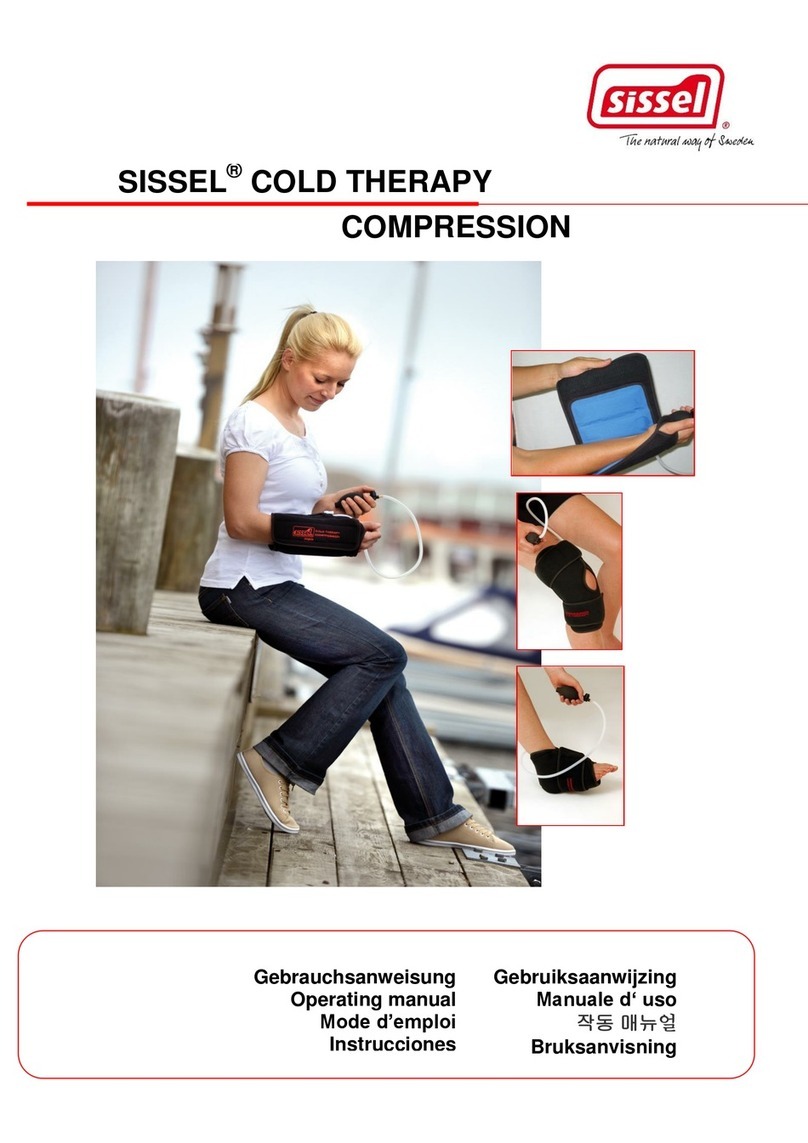
Sissel
Sissel Cold Therapy Compression operating manual
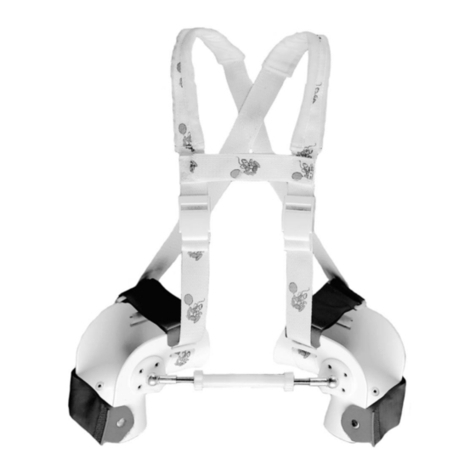
Otto Bock
Otto Bock Lorrach 28L8 Instructions for use

Otto Bock
Otto Bock 50R301N Dyneva light Instructions for use
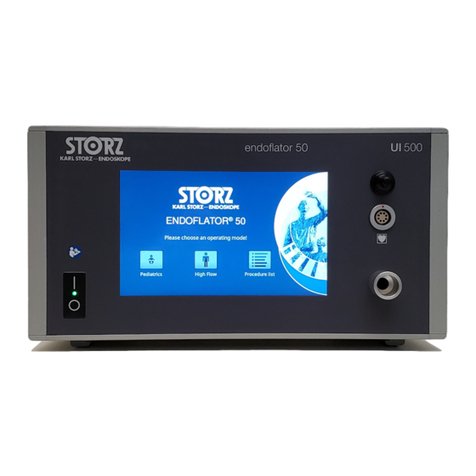
Karl Storz
Karl Storz ENDOFLATOR 50 instruction manual
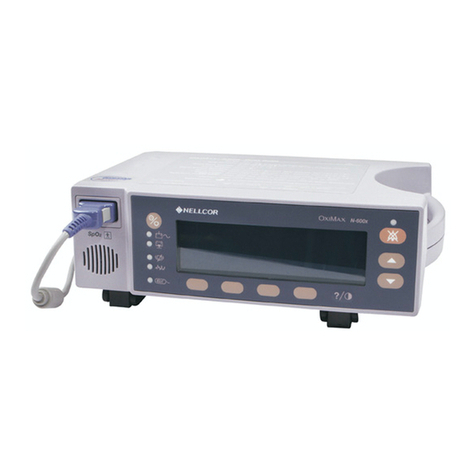
Covidien
Covidien Nellcor OxiMax N-600x Operator's manual

